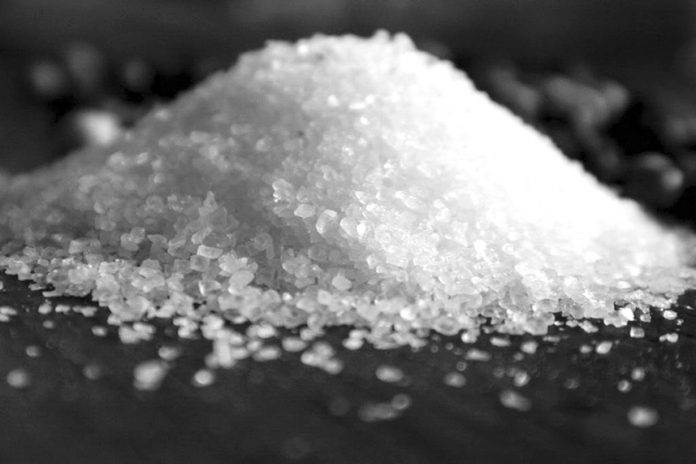The alkali metal sodium is so full of contradictions. Yes, it’s a metal. But, it’s one of those soft ones, about as soft as chilled butter, that can be sliced with a knife. Let it combine with chlorine, however, and it forms sodium chloride or common salt, a hard, crystalline compound. Moreover, unlike most metals, sodium is one of the three elemental metals that are lighter than water – the other two being lithium and potassium, its fellow members in the alkali metal group..
Also, pure sodium if left to itself could be harmless. But just for a brief period. Let it react with oxygen and water vapour in the air and it could explode. Which is why it needs to be stored in kerosene or oil. And, while coming in contact with pure sodium could cause corrosive burns and ingesting it would be toxic, sodium is an essential element for human and animal life.
Understandably, many consider sodium to be a fascinatingly paradoxical element.
Compounds with a long history
Sodium is the sixth most abundantly existing element on Earth and the most abundant alkali metal. But, being highly reactive, it is not usually found in nature in its pure elemental form.
In general, most people might have never seen sodium metal, but all of us come across its numerous compounds almost every day. That’s because, besides forming common salt, something every human being is familiar with, sodium easily reacts with other elements too to form some of the most commonplace substances used in daily life. For instance, it is present in baking soda (NaHCO3), baking powder, washing soda (Na2CO3), borax (Na2B4O7 •10H2O), soaps and detergents, glass, and medicines as well.
Some compounds of sodium have been known and used by people for centuries. Sodium chloride or salt, the most common compound of sodium, has been used to preserve and flavour food since millennia. It was once a much valued and important trade commodity and at various times in history in different cultures it was even used in place of currency. Not surprisingly, the English word ‘salary’ has been derived from the word ‘salt’.
Ancient civilisations were also familiar with soda or sodium carbonate. While it is widely used today for softening water, ancient Egyptians used it in the manufacture of glass as far back as 1370 BC, and also for preserving mummies. What they used was not pure soda, but a substance they called ‘natron’ that was mainly made up of soda and was mined from Natron Valley. Much later, the Romans gave the mineral the Latin name ‘natrium’.
Historically, people also used soda as a cleaning product in their homes, for cleaning their bodies (mixing it with oil and using it as an early form of soap), and also as a cure for headaches. Interestingly, the Medieval Latin name for headache remedy—’sodanum’ – was derived from the Arabic word for headaches – ’suda’.
Discovery of sodium
For a long time, early chemists had been discussing and trying to study the composition of salt and soda. Then, in 1807, the celebrated British chemist Sir Humphry Davy, who had been experimenting with molten salts, finally found the answer. On passing an electric current through caustic potash (potassium hydroxide), he discovered potassium – the first metal to be isolated through electrolysis. Shortly afterwards, he electrolysed very dry, molten caustic soda (sodium hydroxide) and isolated globules of yet another new metal – sodium.
Davy observed that the substance he had isolated “appeared to have the lustre of silver”, was “exceedingly malleable”, and “much softer than any of the common metallic substances” known till then. He also noted it decomposed water, releasing hydrogen.
Sir Humphry Davy initially considered calling the new metallic element ‘sodagen’, and entered this name in his laboratory notebook, but later decided he preferred the name ‘sodium’. He had probably derived both names from the Arabic ‘suda’, the Medieval Roman ‘sodanum’, and the English word for sodium carbonate ‘soda’.
However, for the new element, Swedish chemist Jacob Berzelius preferred the name ‘natrium’– this being the Latin name for sodium carbonate – and was the first to use the chemical symbol ‘Na’ for sodium in his early periodic table.
Commercial use
Of all the alkali metals, sodium is the most commercially important. It was first commercially produced by thermal reduction of sodium carbonate with carbon. Today, sodium is generally mass produced by electrolysing the completely dry, fused sodium chloride. China, the US, and India are the top three countries producing sodium.
Sodium compounds are used on a large scale in the glass, soap, textile, paper, petroleum, chemical, and metal industries, but there is a comparatively lesser demand for sodium metal. Since sodium burns with an intense yellow flame, it is used in fireworks for producing a bright yellow colour, and in sodium vapor lamps as well. Metallic sodium is used for manufacturing other sodium compounds like sodium peroxide, sodium cyanide, sodamide, and sodium hydride, and also for improving the structure of certain alloys and purifying molten metals.
Like its alloy, NaK, liquid sodium too is an important heat transfer agent, easily conducting and dissipating excess heat. Some nuclear reactors therefore use sodium as a coolant. Metallic sodium is also used as a catalyst in the manufacture of artificial rubber.
Crucial biological significance
Sodium is an essential nutritional element for humans and animals. The food we eat provides us with all the sodium we need. It is estimated that the average person consumes about 10 grams of salt a day, though our daily intake needs to be just about 3 grams.
Sodium performs many important functions in the human body. It helps in the proper transmission of nerve signals to and from cells. These signals in turn control the way muscles move. An excess or lack of sodium can therefore cause abnormal nerve and muscle behaviour.
Sodium is also important for regulating the water levels in tissues and blood, thus maintaining the right fluid balance in our body cells. Low sodium levels lead to heat cramping, as can be seen when athletes’ muscles seem to get cramped after exertion. Heat cramping results from the loss of sodium ions from the body through sweat.
On the other hand, too much sodium can damage our kidneys and adversely affect the body’s ability to digest fats. However, the most serious problem high sodium levels could cause is hypertension or high blood pressure, something that puts people at risk for serious health problems such as a stroke and heart ailments.
Arresting global warming
Human activities produce an alarming 10 gigatons of carbon dioxide each year. With CO2 emissions being considered a major cause of global warming, scientists are focusing on preventing the release of huge quantities of this greenhouse gas and are actively researching newer ways for capturing carbon from fossil fuel power plant emissions even before they get into the atmosphere.
Recent research in this area involves the use of sodium carbonate that has long been known to be an excellent carbon absorber. Currently used methods, though successful, are harmful to the environment. For example, in many power plants, caustic fluids like amines are sprayed on huge steel-mesh scrubbing towers for absorbing CO2 from the plants’ gas effluent. These amines pollute the environment and also corrode the steel meshes. This led researchers at the Lawrence Livermore National Laboratory in America, and their colleagues from the University of Illinois and Harvard University to pick an environmentally benign chemical like sodium carbonate as a carbon capture medium.
Together, they developed microcapsules that were filled with a sodium carbonate solution and had a highly permeable polymer shell for allowing carbon dioxide to pass freely through them. Encapsulation greatly increases the surface area for CO2 absorption from plant emissions, making it around 100 times more than the area available when a normal steel-mesh tower is sprayed with amine solution. Once the capsules absorb their maximum capacity of carbon dioxide, they can be heated so that pure CO2 can be released and stored separately, while the capsules themselves can then be reused.
The researchers have tested the use of the sodium carbonate microcapsules on a small scale, and it could take a while before they can be used industrially. But, if this new approach works, it could mark a remarkable advance in the fight against global warming using a low-profile and inexpensive compound of sodium.
References
1. Royal Society of Chemistry: Periodic Table – Sodium – http://www.rsc.org/periodic-table/element/11/sodium
2. Anne Marie Helmenstine: Get 10 facts about the element sodium – Thought Co, January 13, 2019, https://www.thoughtco.com/sodium-element-facts-606471
3. World of Molecules: The element sodium – https://www.worldofmolecules.com/elements/sodium.htm
4. Chemistry Explained: Sodium – http://www.chemistryexplained.com/elements/P-T/Sodium.html
5. Chemicool Periodic Table: Sodium – Chemicool.com, 18 Oct. 2012, https://www.chemicool.com/elements/sodium.html
6. Stephanie Pappas: Facts about sodium – LiveScience.com, 19 February, 2015, https://www.livescience.com/28820-sodium.html
7. Margit S. Müller: A pinch of sodium – Nature Chemistry, volume 3, page 974 (2011), https://www.nature.com/articles/nchem.1205
8. David Read: Sodium – ChemistryWorld.com, 27 August, 2008, https://www.chemistryworld.com/podcasts/sodium/ 3005954.article
9. Roger Aines: How baking soda can fight climate change – World Economic Forum, 25 February, 2015, https://www.weforum.org/agenda/2015/02/how-baking-soda-can-fight-climate-change/
































